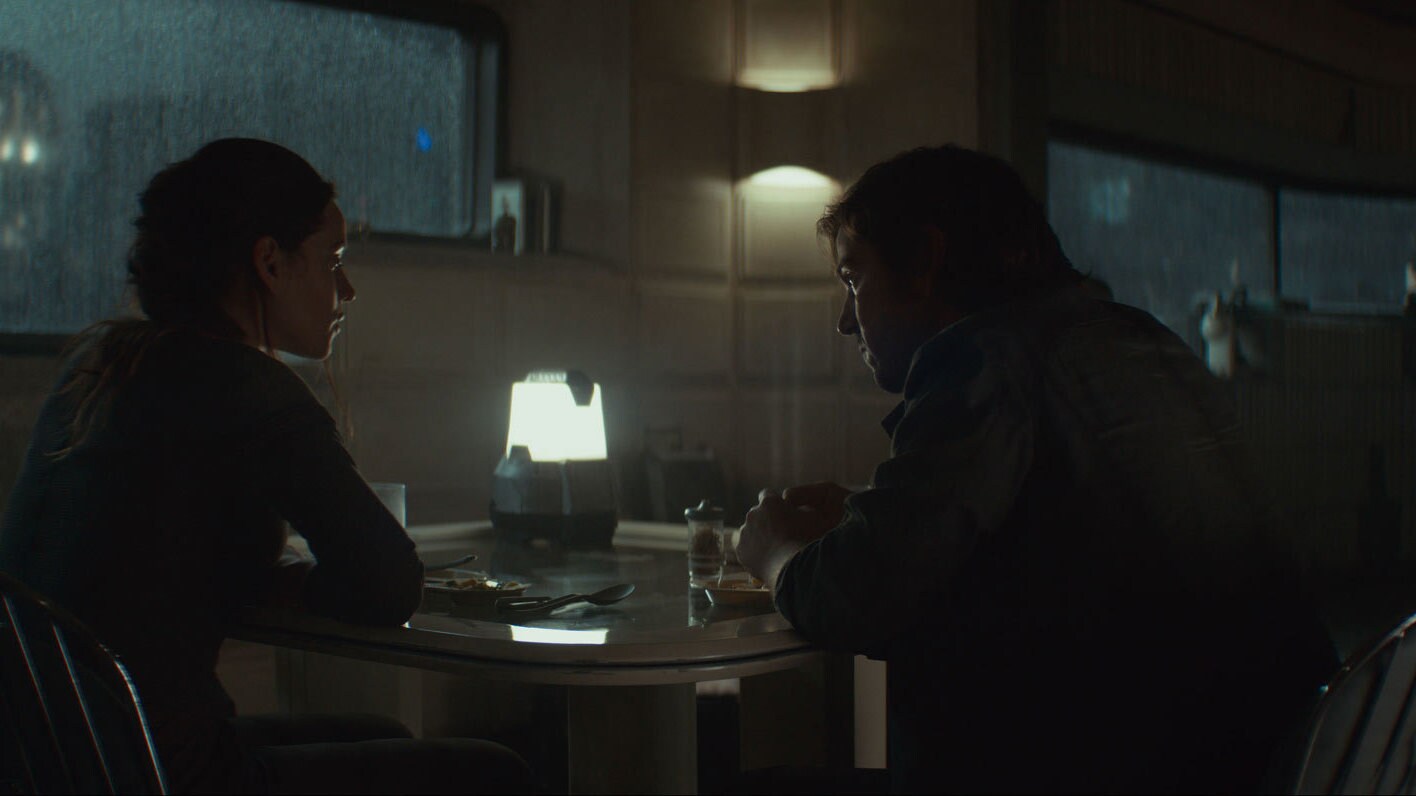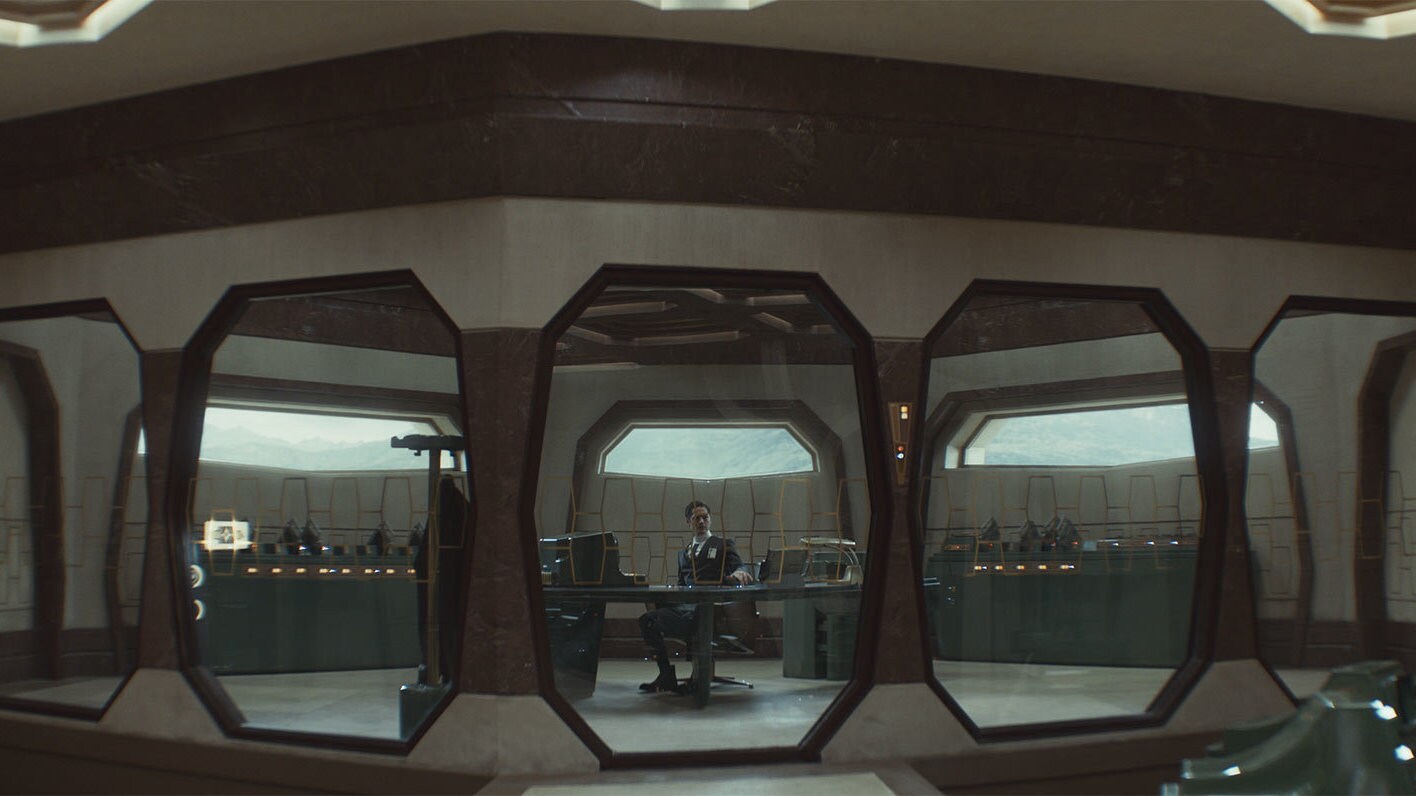Elizabeth Bear adds pirates, a chewy social drama, and a big alien puzzle to her White Space space opera universe.
Sunya is a researcher traveling to the edge of the galaxy. She studies information and the collection and interpretation of information, and a cache of ancient alien information is the biggest known. But her arrival there is not easy. Pirates are blockading the system. The star that the cache is orbiting, as well as the space station for the researchers, is probably going to go supernova any time now. And then there are the attempted murders. And just what are those mysterious things Sunya is seeing in the corner of her vision?This is the story of The Folded Sky, the third and latest in her White Space space opera, following Ancestral Night and Machine. It takes place roughly in the same time period as Machine, thus some time after Ancestral Night (the actual Ancestral Night ship makes a brief cameo in the novel). If you will recall, these novels revolve around a spacefaring community of aliens, humans among them. Ancestral Night involved salvaging lost ships, and weird alien technology, as well as doing a lot of the heavy lifting in setting up this verse for the reader. Machine was very much Bear’s love letter to the James White’s Sector General novels, focusing on alien medicine an the ethics of healing and medical care.
So what is The Folded Sky, then? Well just like I was rather reductivist in my descriptions of Ancestral Night and Machine, I could be reductivist with The Folded Sky and say that it was a pirate novel (yes there are pirates in Ancestral Night, but this is a pirate novel). The pirates are a big threat in the novel, but of course, as with any Bear novel, a lot more is going on here. Just in terms of plot, we have the Baomind, an artifact/information reserve of the lost civilization of the Koregoi (who built the Ancestral Night by the way). We have attempted murders. Oh, and did I mention that the star that the Baomind is around that is being studied is on the verge of going supernova?
But, of course, a Bear novel is hardly just about the plot these days, if they were ever. Let’s take our POV and primary character, Dr. Sunya Song. She’s an archinformist, a data historian, someone perfect for taking on the task of organizing the vast library of information sitting in the Koregoi datamind. It’s a work trip of months and years away from her wife and children, or so she thinks. Turns out they are coming to stay at the ramshackle orbital station (really just a collection of ships and parts) after all. Unfortunately for Sunya, they also came on the same ship as Dr. Vickee DeVine, who has also come out to the site. To say that Sunya and Vickee have a personal history would be to say that the Battle of Kursk was a tank battle. Vickee is Sunya’s former mentor, former girlfriend, and is always sets herself as the center of any group of people, and quite successfully at that. She is quite literally the last person Sunya wants to work with on this space station.
Thus, in addition to the overall ticking time bomb of the plots (in additional to the stellar problems, the pirates get a pretty effective blockade going, and supplies are running out, and there is no ansible to easily contact civilization for help), we get a lot of chewy social and philosophical drama, debate and discussion. Rightminding comes in for discussion and debate here, as it did in both Ancestral Night and Machine, but here since we have attempted murders, the debate is how someone who was rightminded (whoever it was) make the attempts. We also get debates on interspecies relations and tolerance (the pirates are intolerant of AIs, transhuman technologies, and aliens), first contact protocols, and the challenges of a work life balance with your spouse and your teenaged kids.
And did I mention the cats?
The central image that I keep going back to in this novel, however, a throughline and a symbol of Sunya, of humanity, of the entire interspecies culture she belongs to, is a bonsai. Sunya’s family has had the bonsai for over a hundred years, from planet to space station, to starships, and all the way here to the Baomind. The bonsai is resilient, but needs care. It’s shrunken and under stress, but it has survived a lot. It is not the biggest, or the baddest, but for some, such as Sunya, it is the epitome of beauty. Humanity is a bonsai. The interstellar polity is a bonsai. And most importantly and most directly, Sunya is a bonsai.
This is never so clear, and never so unmistakable, in comparing her to Vickee DeVine. Their clashes and comparisons are throughout the book. Vickee is seemingly everything Sunya wants to be. Successful, the center of attention and power, supremely confident in her abilities. She is the Queen Bee of the high school of the group of scholars and researchers in Town, and she knows it. Their interactions and conflicts are a major portion of the book. Sunya is constantly seeing herself in the shade of Vickee, and part of the journey of the book is Sunya coming to terms with Vickee. There are some extremely messed up dynamics here, even in a society of Rightminding, People are, in the end, going to be people, and those social dynamics and personal dynamics are central to the book and what it does.
And then there are the social dynamics with the AIs (can AIs be assholes? Bear explores that!), the aliens, all in a confined and restricted space (see above, blockade). Bear has a lot of fun of seeing how these people react to each other under pressure. There is a lot of thought about pirates, and why they fight and strive for what they do, social dynamics laid bare at the barrel of a gun in a blockade.
In addition to those social dynamics, Bear is interested in history, sociology, archaeology, anthropology, first contact (which I mentioned before and mention here again, but am being deliberately vague about any further, save to say that Bear treads into, and exceeds, some of the ideas of Stephen Baxter in his Xeelee novels.). There are also echoes and reflections of writers such as L.E. Modesitt's space operas, Kristine Kathryn Rusch (the Diving novels) and Jack McDevitt, just to name a few.
So, thinking about Baxter for a moment, in addition to the social science fiction there are also relativistic space battles, interesting technology, quirky and unusual physics, codebreaking (of a sort), and much more. Bear has put a variety of scientific disciplines and speculations into the novel, and seemingly no matter what kind of science fiction speculation you are into, you are going to find something to love here.
And then there is Town itself. It’s a fascinating place to set most of the narrative, even without adding that blockade into the mix . It’s more than a bit of a cobble, something that is commented on multiple times. It’s been slapped together because, as Bear notes, high manufacturing of a habitat in a solar system far away from the Core is just not practical. It’s rather skin-of-your-teeth engineering and general feel puts me in the mind of the Finder universe of Suzanne Palmer.
So with all of this going on, you might be asking one important question at this stage, and indeed, it is a concern going into this book? Does it hold together? Yes. Bear manages this by a strict and tight point of view on Dr. Song. There is a creed, for lack of a better word, said at the 4th Street Fantasy Convention (which the author does help run), that “point of view solves everything”. This is the idea that a lot of problems that come up with a narrative can be tackled by how and from whose perspective, or perspectives, you tell your story. Or as the musical Hamilton put it “who lives, who dies, who tells your story?”. But the problem and challenge for the author here is a big book with lots of plots, narratives, big damn ideas, a big damn object, pirates, attempted murders and family drama. And that doesn’t even cover some of the other subplots and the setting and other things to find. How can a reader make sense of this as a narrative? So Bear’s solution is a tight and intimate third person point of view that gives us a deep and penetrating dive into her story, her mindset, her concerns, and her perspective. We get to intimately know Dr. Song, enough that when the murders occur, Vickee is immediately a suspect (and immediately questionable as one) because of how Song feels about her and their shared history and how it comes though that first person perspective and narrative.
As far as the question of whether this book stands alone, I think it does, although you will need to do a tad more work than if you had read Ancestral Night or Machine. There is no overlap of characters (sadly, there is no “Mantis Cop” in this one, although Xhelsea makes a damn good Goodlaw in his stead). This book relies a bit, but only a bit, on you having been in this universe before, but it is not a complete plunge into the unknown. You could start here, if the prospect of this narrative intrigues you the most. Like the previous two books, The Folded Sky is queer, full of interesting characters, and immensely readable.
Highlights
- Queer, inclusive space opera, with aliens, AIs and more
- Pressure cooker environment turns up the drama
- A bonsai tree of a space opera novel.
Reference: Bear, Elizabeth, The Folded Sky [Saga Press, 2025]
POSTED BY: Paul Weimer. Ubiquitous in Shadow, but I'm just this guy, you know? @princejvstin












